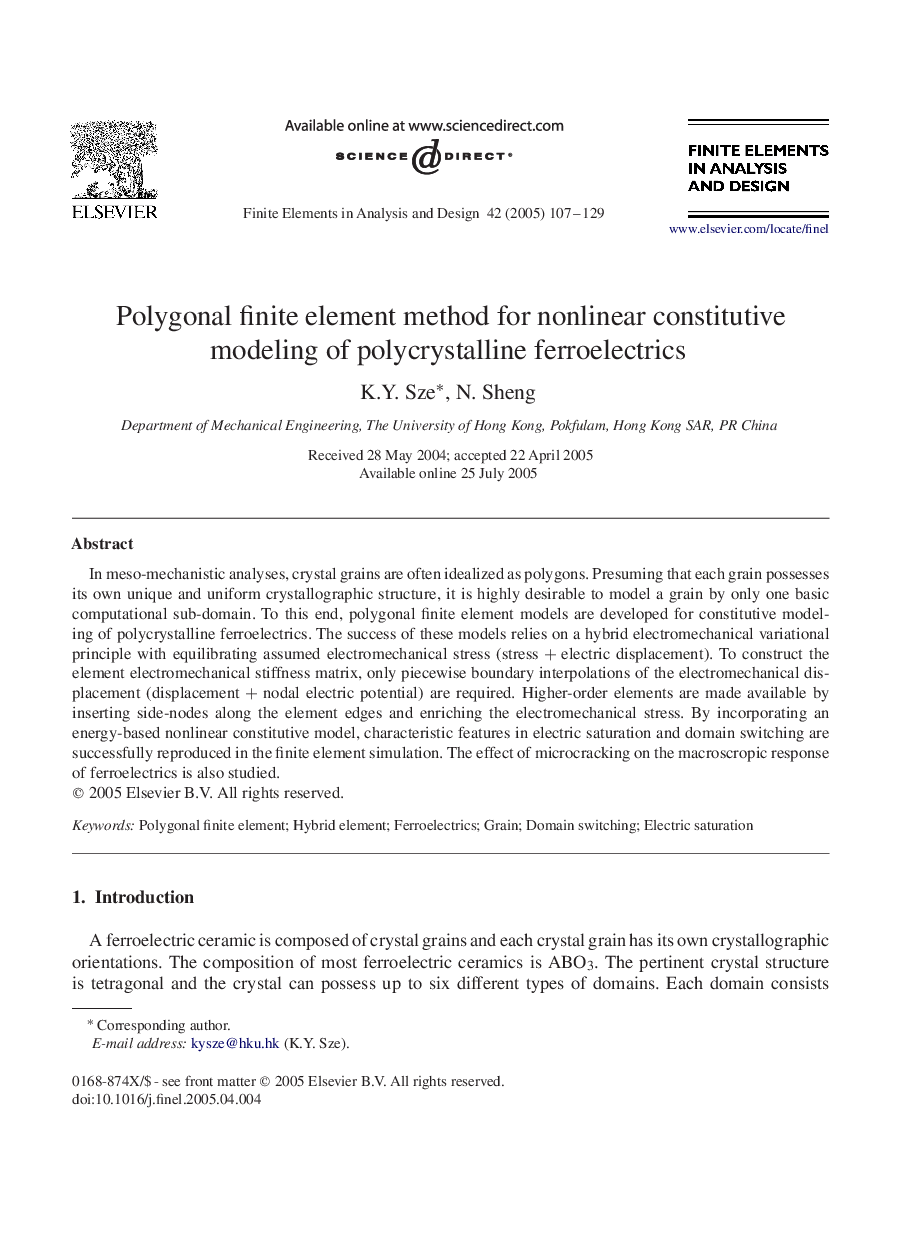| Article ID | Journal | Published Year | Pages | File Type |
|---|---|---|---|---|
| 10354558 | Finite Elements in Analysis and Design | 2005 | 23 Pages |
Abstract
In meso-mechanistic analyses, crystal grains are often idealized as polygons. Presuming that each grain possesses its own unique and uniform crystallographic structure, it is highly desirable to model a grain by only one basic computational sub-domain. To this end, polygonal finite element models are developed for constitutive modeling of polycrystalline ferroelectrics. The success of these models relies on a hybrid electromechanical variational principle with equilibrating assumed electromechanical stress (stress+electricdisplacement). To construct the element electromechanical stiffness matrix, only piecewise boundary interpolations of the electromechanical displacement (displacement+nodalelectricpotential) are required. Higher-order elements are made available by inserting side-nodes along the element edges and enriching the electromechanical stress. By incorporating an energy-based nonlinear constitutive model, characteristic features in electric saturation and domain switching are successfully reproduced in the finite element simulation. The effect of microcracking on the macroscropic response of ferroelectrics is also studied.
Related Topics
Physical Sciences and Engineering
Computer Science
Computer Science Applications
Authors
K.Y. Sze, N. Sheng,
